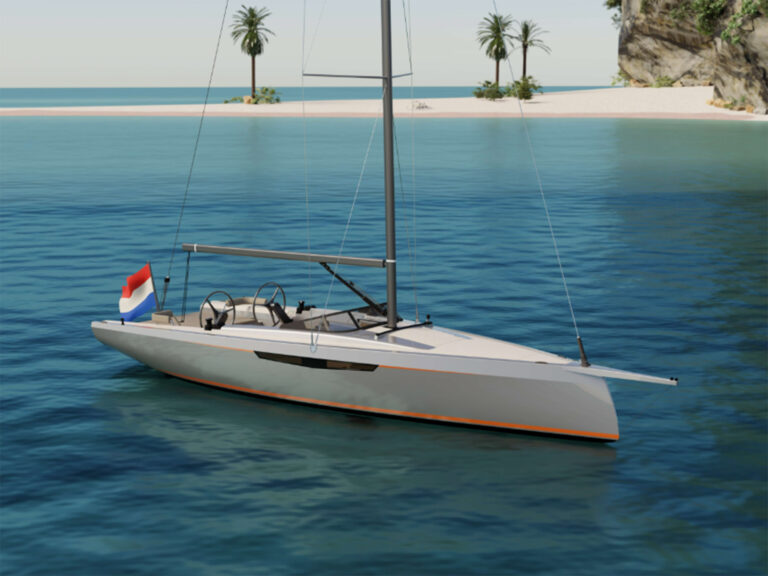
There are three types of boats. The first includes every possible spare and piece of gear that might be used. The second has hardly anything at all. The third has essential spares and gear, but is not overstocked.
I like to sail on the third kind of boat, with the essentials. I recently completed a safety-at-sea course whose list of gear was so exhaustive that its cost was depressing, and the equipment would overwhelm the stowage areas on any yacht. I thought about that list and the three long-distance ocean races that I competed in over the summer. I was amazed by how many pieces of equipment we used to solve small and large problems.
All of this got me to thinking about which equipment is considered essential, and why. Boats seem to gather an ever-increasing amount of gear. Once each year, I take every item off the boat and retain what’s useful while eliminating things that will not be used. It’s a good opportunity to review the inventory and make sailing more efficient.
Aboard my 32-foot day sailor, Whirlwind, I make sure to have the essentials: a paper navigation chart, life jackets appropriately sized for all crew, a sturdy anchor, a toolkit, a medical kit, spare lines, a VHF radio, a cellphone, fenders, dock lines, sunscreen and adequate drinking water. I ask each crewmember to bring a foul-weather jacket, sunglasses, a hat and boat shoes.
On board, I include a boat hook, several buckets for bailing, an electric pump, hand-operated pumps, and a small box with fittings, shackles, clamps and various pieces that might be of use. My inventory fits easily in two lazarette boxes on either side of the boat and in the bow.
After 10 years of sailing, I have fine-tuned the necessary equipment, along with instructions for each member of the crew. The essentials get more complicated for larger boats, but here is my list of essentials.
Boat Handling
Have an anchor, chain and line that are adequate for the size of the boat. If you need to anchor, you want it to hold. Have extra lines, including small stuff that can be used when something needs fastening.
Keep all sails folded and ready to set. Make sure every crewmember understands how to start, run and stop the engine. Most important, take a moment to demonstrate how to operate the head.
Before going out for a sail, hold a brief crew meeting to explain where the life jackets are located, and where the important safety equipment is stowed. Also assign specific tasks in case of an emergency.
Comfort
Bring proper foul-weather gear. Even on warm days, a spray jacket is helpful. Insist that the crew wear boat shoes. Toes and feet are particularly susceptible to injury. No bare feet.
Sun glare is tough on eyes. Sunglasses are a must. A wide-brim hat reduces sunburn.
On cold or windy days, a pair of gloves is helpful. Find a dry place to store the crewmembers’ gear.
Communications
Carry a charged VHS radio, a cellphone and signal items (whistle, flares, horn, flags and a mirror). Subscribe to at least one weather service to keep track of the forecast.
Engine
Keep a fire extinguisher near the engine in case of a fire, and make sure that extinguisher is up-to-date.
Instruct the crew on how to operate the engine. An instructional manual is an essential item that has helped me many times when I’ve had engine troubles, which regular maintenance can help to avoid.
Medical
Carry a complete first-aid kit and enough drinking water for all hands. Dehydration is a common problem for many sailors. Also keep a good supply of sunscreen available, and ask the crew to reapply periodically.
For people prone to seasickness, a scopolamine patch is an effective remedy available by prescription.
Navigation
I believe boats should carry paper (or waterproof) charts of the area. Electronic aids are useful, but paper charts are the most reliable. I like when you can spread the chart on a table and visualize the sailing area.
A GPS is also an important tool. Stow extra batteries for a handheld unit. I also always carry a copy of the Eldridge Tide and Pilot Book, which provides detailed information on tides and currents for the East Coast.
I also keep a hand bearing compass, and test the running lights to make sure they will be on at night. A pair of binoculars is also useful.
Repair Kit
Carry a rustproof toolbox with a hammer, pliers, a wrench set, a screwdriver set, vice grips, a wire cutter, duct tape and a good knife. A hand pump, buckets and sponges augment an electric bilge pump.
Also carry a collection of shackles, shock cord, fuses, fittings, blocks, cotter pins, equipment that can be used to jury rig something that breaks, and silicone spray.
Safety Gear
A properly sized life jacket is necessary for each member of the crew. For weak swimmers and in rough weather, PFD use should be mandatory.
Carry a horn and a whistle in case you need to draw another boat’s attention. I also carry a package of flares.
Have a flotation device ready to throw to anyone who might fall overboard. Post a list of the location of safety equipment.
Larger boats carry life rafts. Respect the expiration date, and periodically get the raft renewed. Post of a list of all your safety equipment and where it is located.
Sustainability
Carry all garbage ashore. Instruct the crew on proper use of the head.








